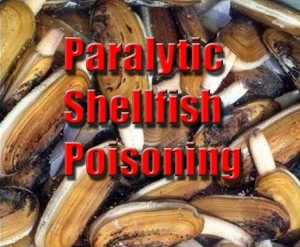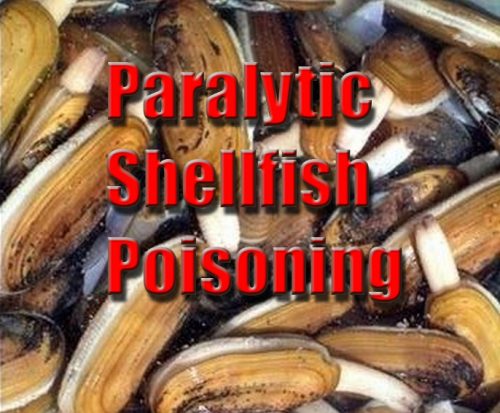 ANCHORAGE — The State Medical Examiner’s Office has confirmed a death in Alaska to be consistent with paralytic shellfish poisoning (PSP). The individual who died had underlying health conditions that contributed to the death; however, the primary cause of death was determined to be paralytic shellfish toxin exposure.
ANCHORAGE — The State Medical Examiner’s Office has confirmed a death in Alaska to be consistent with paralytic shellfish poisoning (PSP). The individual who died had underlying health conditions that contributed to the death; however, the primary cause of death was determined to be paralytic shellfish toxin exposure.
This is the first known PSP fatality in Alaska since 2010, although serious illnesses are reported more frequently. Dating back to 1993, the State of Alaska has recorded four previous PSP deaths – in 1994, 1997 and two in 2010, along with more than 100 cases of shellfish poisoning.
The individual who died consumed blue mussels and snails collected from a Dutch Harbor beach on July 4, 2020. The shellfish were cooked before consumption. Symptoms began about four hours after the shellfish were eaten. The patient’s initial symptoms included tingling in the fingers, numbness, a floating sensation and vomiting. Several hours later, the patient reported numbness in their mouth, weakness in their hands and pain in their neck and back. The patient was transferred to a local clinic and then flown to an Anchorage hospital where they died. Two other people ate smaller amounts of the same shellfish but never developed symptoms.
Blue mussel samples collected from the beach on the same day the shellfish were consumed were found to have extremely high toxin levels, more than 100 times higher than the safe regulatory limit. The snail samples also had elevated toxin levels, but not as high as the blue mussels.
Warnings were issued immediately to the community. The Alaska Sea Grant Marine Advisory Program along with the Iliuliuk Clinic and the Knik Tribe of Alaska posted flyers and social media notices and sent email and fax warnings. Notices were also translated into Spanish, Vietnamese and Tagalog. Alaska Sea Grant and Iliuliuk Clinic staff also did radio interviews, produced a radio public service announcement and are posting warning signs at popular harvesting beaches.
[content id=”79272″]
High levels of algal toxins that can lead to paralytic shellfish poisoning have been recently identified in non-commercially harvested shellfish from numerous Alaska communities. Recent PSP reports from local communities have found dangerous levels of toxins in butter clams and/or blue mussels from beaches in Craig, Chignik Lagoon, Hydaburg, Ketchikan, Kodiak, Kasaan, Juneau, Metlakatla, and Unalaska, among others.
Recreational gatherers should always be cautious of the dangers of PSP from all shellfish species harvested on beaches across Alaska. There are NO beaches that are certified or designated as “safe” beaches for shellfish harvesting in Alaska. Non-commercially harvested shellfish may contain paralytic shellfish toxins that, if ingested, can cause death. Anyone consuming non-commercial shellfish does so at his or her own risk.
Commercially harvested shellfish, however, are considered safe to consume. This is because commercial harvesters are required by the Alaska Department of Environmental Conservation to have products regularly tested for toxins that can cause PSP.
The public should be aware that PSP toxins are not destroyed by cooking or freezing shellfish before consumption. PSP toxins have also been found in crab viscera, known as crab butter; crab should be cleaned and eviscerated before being cooked.
Treatment for PSP is supportive care, which may require mechanical ventilation; there is no antitoxin. If you think you have PSP symptoms, call 911 and seek immediate medical attention.
Suspected cases of PSP should be reported as soon as possible to the State of Alaska Section of Epidemiology at 907-269-8000 or after hours at 1-800-478-0084. Public health officials will investigate and help prevent additional cases from occurring.
For more information on shellfish harvesting and PSP, go to:
- Alaska Department of Environmental Conservation, Paralytic Shellfish Poisoning
- Alaska Department of Health and Social Services, Shellfish Poisoning Resources
Additional Alaska-specific shellfish toxin public service announcements, including testing results, are available at:
- Southeast Alaska Tribal Ocean Research (SEATOR)
- Kachemak Bay National Estuarine Research Reserve
- Kodiak Area Native Association
- The Knik Tribe (email list)
Background information on harmful algal blooms (HABs) in Alaska, HABs monitoring, and regional efforts can be found at the Alaska Harmful Algal Bloom Network.
###



